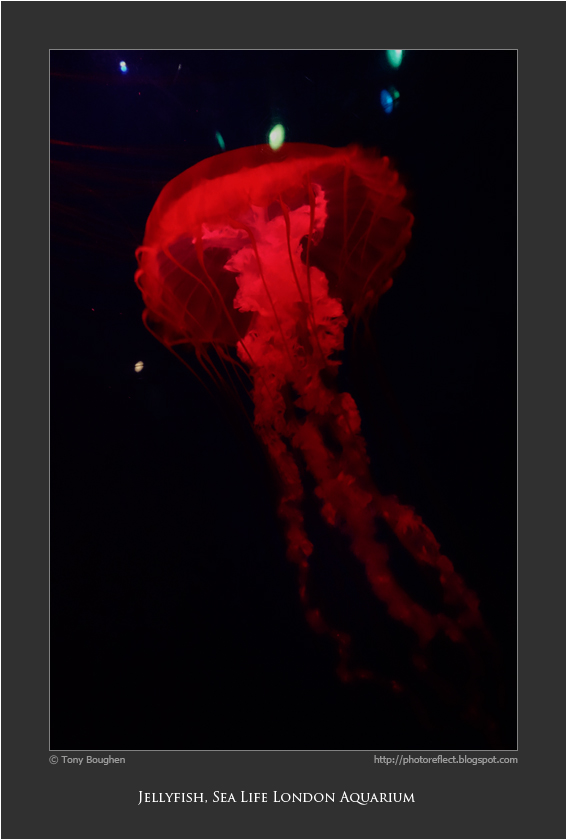One of the delightful things about children is that you never know what they might say next. What can seem to be evidence of a grasshopper mind or a struggle to understand is more often than not simply an indication that children's thought isn't constrained by the same wide range of experiences that often limit adult thinking.
My wife tells a story of the dawning realisation by a small boy who knew her that my surname is the same as hers. After repeating both our names - "Mr Boughen, Mrs Boughen" a few times to fully establish the connection he said, "Do you live in the same house?" As my wife replied in the affirmative she wondered just where his mind would go next. But what he came up with was nowhere near what she thought he might say. "Does it have a chimney?" he enquired.
During our recent couple of days out and about in London with our granddaughter we visited the Sea Life London Aquarium. She'd been there when she was younger and had been quite scared of the sharks. On this occasion, however, she was fascinated by everything she saw and we spent a couple of hours slowly moving through the building marvelling at the variety of life on display. When we came to a tank that held some jellyfish we paused to watch them swim about by pulsating their bodies. We'd answered a lot of questions up to that point but I wasn't prepared for the one that these jellyfish prompted. "Where's its face?" she asked. A perfectly reasonable question from a child whose experience of animal life up to that point has been largely with those that have eyes and mouths. But not the easiest question for a grandfather to answer in a way that a two year old can understand.
I took quite a few photographs of the creatures in the aquarium. However, low light levels, fast moving fish and a relatively small sensor camera don't make for photographic 100% success. Quite a few shots had motion blur or other shortcomings. But the jellyfish came out rather better (as did the crocodiles, terrapins and slower moving fish). These examples were in a tank with lighting that cycled through a variety of colours. The main photograph is best of the crop for the lighting and the composition. I include the other two for contrast.
photograph and text © Tony Boughen
Photo 1
Camera: Sony RX100
Mode: Aperture Priority
Focal Length: 10.4mm (28mm - 35mm equiv.)
F No: f5
Shutter Speed: 1/30 sec
ISO:2500
Exposure Compensation: -0.3 EV
Image Stabilisation: On


